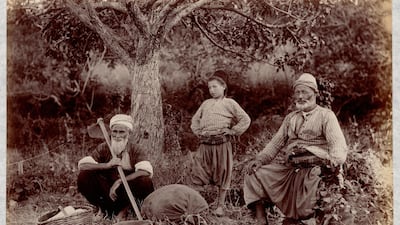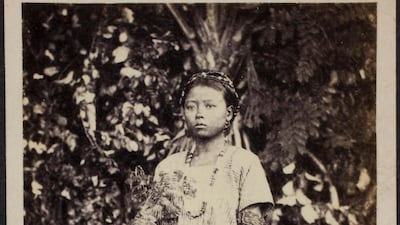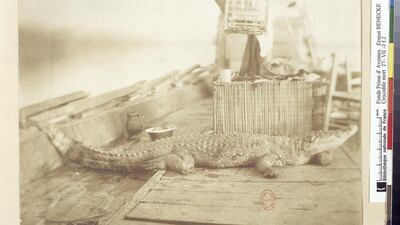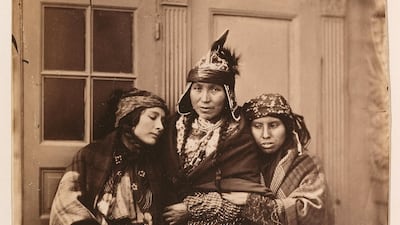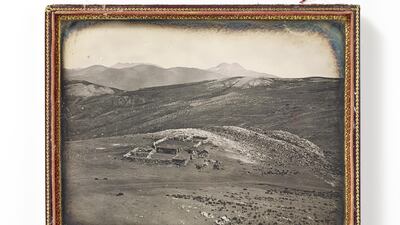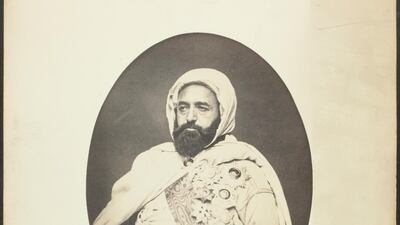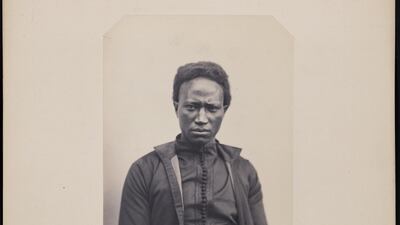The new Louvre Abu Dhabi exhibition, Photographs 1842–1896: An Early Album of the World, maps out the earliest examples of photography. The time in which photographic technologies were developed was also when the world became more easily traversed, due to advances in transport and communications, industrial and economic expansion, and imperialism: the grand European project of interest, engagement, and authority over other cultures.
It is difficult to separate photography from this history because the camera, first developed in France in the early 19th century, was such a crucial instrument within it. Conceptually, in its role in the collection and classification of knowledge, and practically, in that it allowed European sailors, traders, and military and colonial officials to create visual compendiums of local populations, or document members of tribal populations brought to European capitals such as Paris, Berlin or London.
The majority of the photographs in the first two rooms of Louvre Abu Dhabi's exhibition, curated by Christine Barthe of the Musee du Quai Branly, an ethnographic museum in Paris, come from this context. They show Algerians and Brazilians brought to Paris; Filipinos, Africans and Peruvians encountered by scientists and navy sailors; and Orientalist images made in Istanbul by Ottoman photographers.
This intense focus on people dissipates throughout the exhibition, which then takes in landscape photography, again captured mainly by travelling Europeans, as well as photographs taken by local populations, in a section called In Local Hands. These are, in one sense, the most interesting images, as many of them have rarely been seen. The subjects are touchingly familiar, suggesting a continuity among what people chose to make images of, such as high-ranking figures – a young maharani of Nepal and her ladies in waiting, for example – touristic images of important regional sites, such as Persian shrines, and people who look different from those behind the camera, such as images of rural populations photographed by travelling elites.
But the link between conquest and photography returns in a room of images of Native Americans, by famed photographer Timothy O'Sullivan and others, at a time when many were killed. If you are mounting an exhibition of how the world population was pictured in the 1800s, there is no escaping what those images document.
"The colonial context is not a block, it's simply a context," says Barthe, who has conducted years of research primarily in early photography in South America. "We don't have to ignore that, we have to work with that. We have to know that, of course, but it doesn't mean the photograph has a single identity which is the identity and the original purpose. The meanings could change and evolve. I like it for this reason."
This exhibition and Barthe's research are part of the evolution of the meaning of these images – a project that has acute significance for Louvre Abu Dhabi, one of the few universal museums outside the West. What kind of look at the history of European colonisation can we expect here? One method has been to move from the framing of native people as "types" to seeing them as people with names and identities.
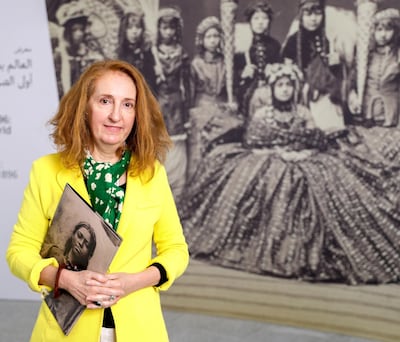
"It could look like a very bad history, bringing people to Paris simply to have pictures of them, and we don't know what happened after that," Barthe says, telling a story of an image of two Brazilians who were captured in an image. "I received an email from a Paris art space saying they were in contact with a Brazilian artist who was looking for his ancestors. In their oral tradition they have this story of two people leaving Brazil for Paris who never came back."
She met the mother and sister of the artist in Paris, though that was when she was packing up the images for Abu Dhabi; her research will continue after the pictures return. "Now we have information, it's time to share," she says. "These pictures that were sometimes made in a very bad context and for a very sad reason could have a new life. They now will become an important source for those people."
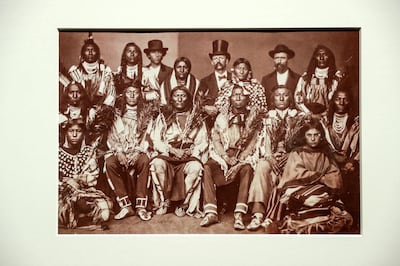
Barthe has also been studying vernacular imagery, or how the technology was adapted in different places. This show has spurred the Musee du Quai Branly to collect early images taken not by European photographers but by locals, such as the earliest known daguerreotype in Argentina or the different display formats of Japanese daguerreotypes, in which the images, rendered on tin, are encased in wood rather than on leather, as per the European tradition.
But the challenge persists to help the public understand this research, and on a broader scale, signalling the structural assumptions implicit in the images' backstories. Barthe's research and the motives behind it, for example, are not displayed prominently in Louvre Abu Dhabi's wall text. Instead, the photographs are on display much like they would have been shown in the 1800s, and there's no denying that part of the interest in these early images is the glimpse they afford into the lives of people different from those behind the camera.
If this distance in the mid-1800s was a factor of geography, it is now one of time. But the power dynamic between centre and other is hidden for both: as the exhibition wall text notes, these images "erase the distinction between near and far". That is to say: it is a very similar voyeuristic display of marginal subjects gawped at by the touristic elite, and as such it is a profoundly uncomfortable experience.
The show's final example of a controversy around the Hopi Snake Dance comes closest to an admission of these problems. The Hopi Snake Dance, part of a rain dance among the Pueblo people of the southwestern United States, became a popular tourist attraction in the 1890s, despite being a sacred ritual that was meant to be closed to outsiders. The Musee du Quai Branly has a well-known album made by the photographer George Wharton James that includes images of the dance. In a mark of respect for the Hopis, Barthe chose to show the page after the photographs of the snake dance, which displays the Native Americans' surprise at his camera.
It is not Louvre Abu Dhabi's job to redress the historical iniquities of the time during which these images were taken. The technology was developed in France and Europeans took the majority of images that exist. But given the large body of postcolonial literature that has followed this period, the exhibition could benefit from exploring the wider debates around the material, particularly in an Arab context.
At the Qalandiya International in Ramallah and Jerusalem last year, for example, Palestinian artist Essa Grayeb accompanied a slide projection of Orientalist early images from the Middle East, of the type shown here, with a video of young Arab photographers discussing the issues around the representation of the Middle East. It was a thoughtful way to present the intriguing historical documents, while also allowing space for multiple voices and viewpoints.
Photographs 1842–1896: An Early Album of the World is at Louvre Abu Dhabi until July 13



